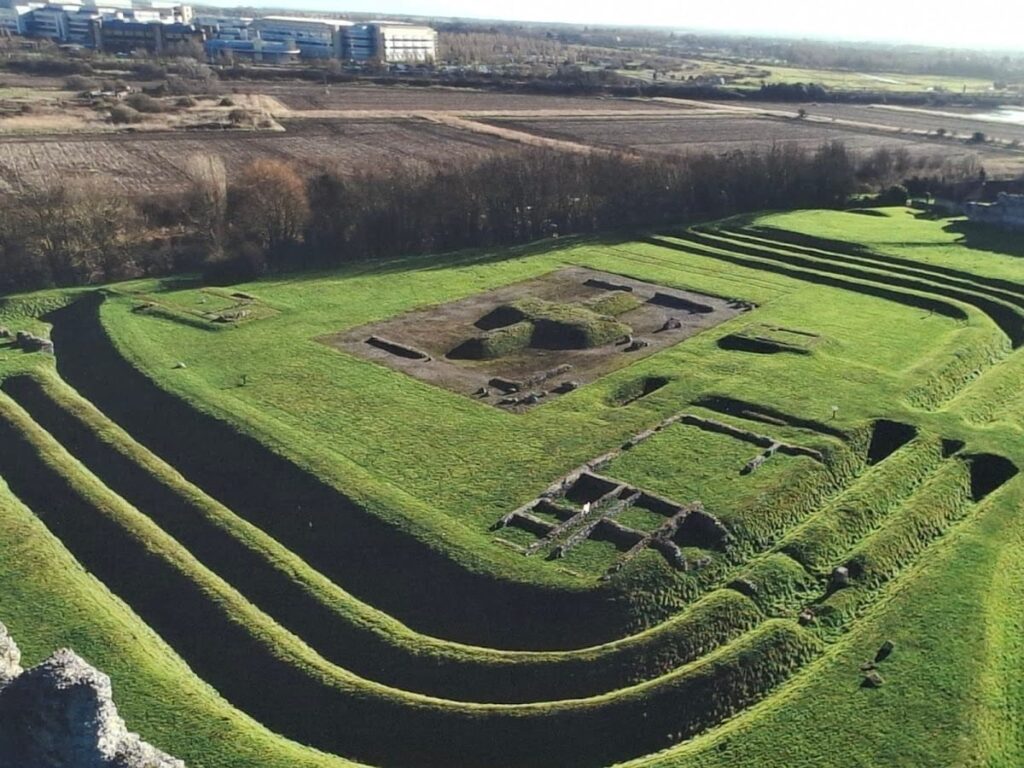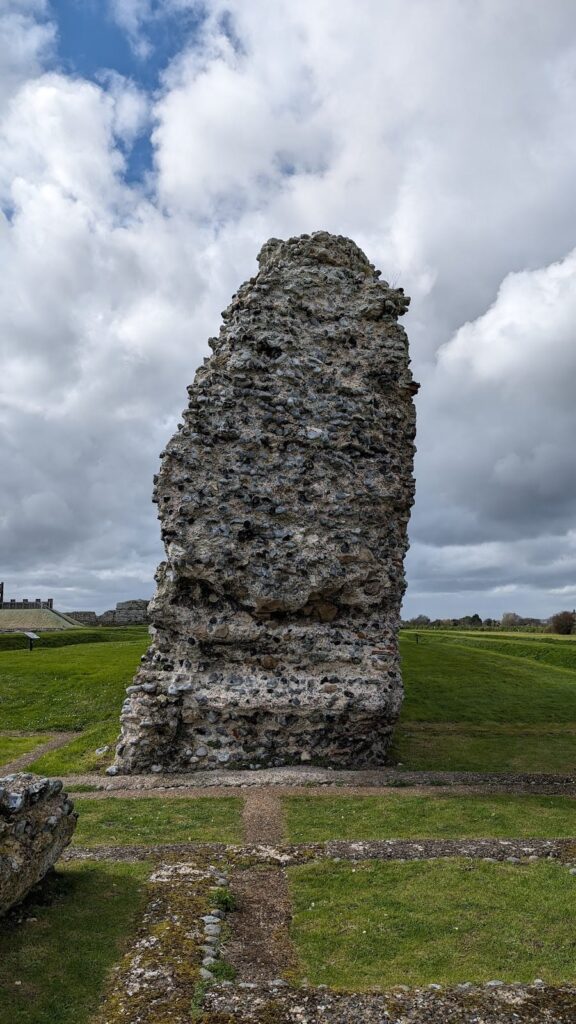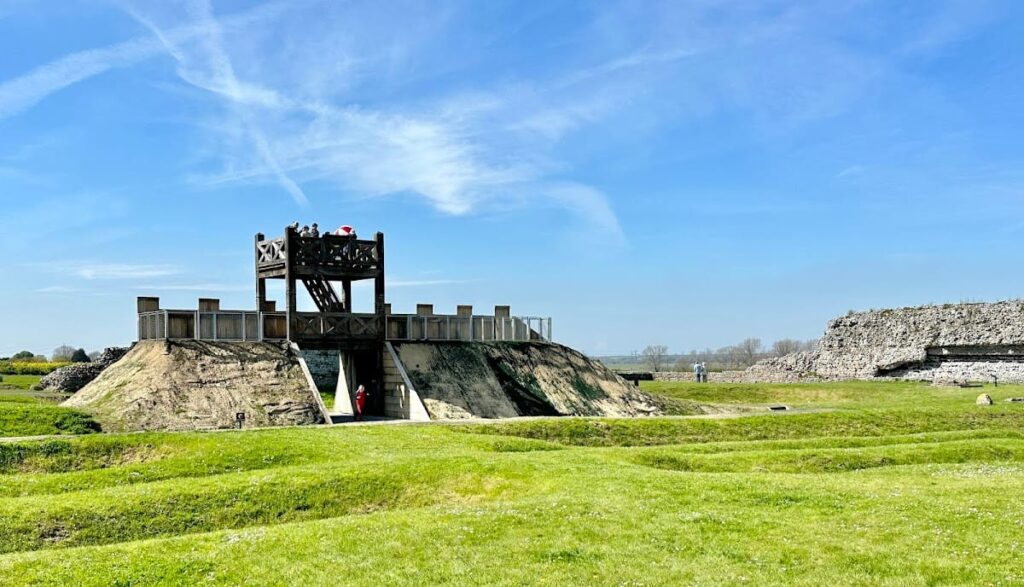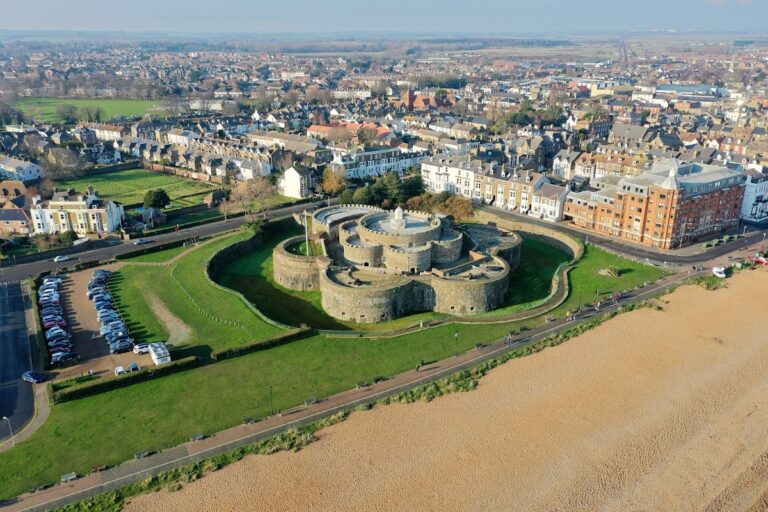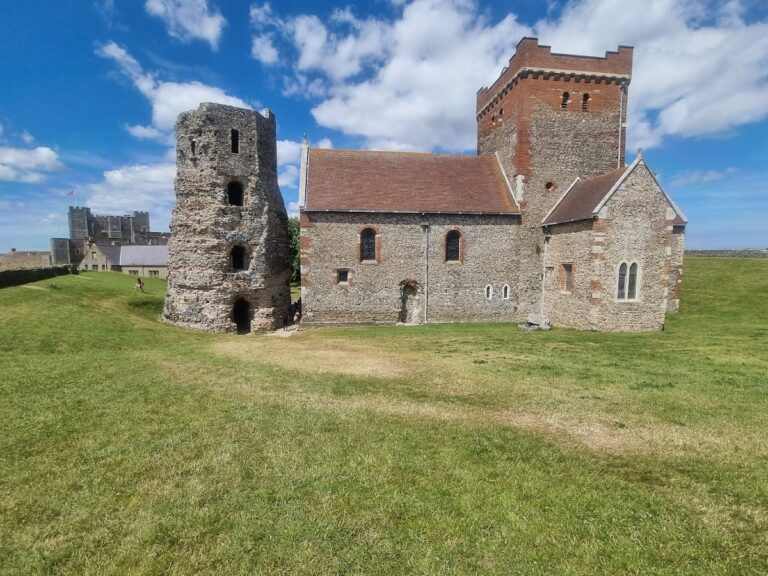Richborough Roman Fort and Amphitheatre
Visitor Information
Google Rating: 4.5
Popularity: Low
Google Maps: View on Google Maps
Official Website: www.english-heritage.org.uk
Country: United Kingdom
Civilization: Roman
Remains: Military
History
Richborough Roman Fort and Amphitheatre is located in Sandwich, Kent, United Kingdom. It was established by the Romans as the initial landing site for their invasion of Britain in AD 43. The Romans built a fortified bridgehead here, defended by a double ditch and rampart with a timber gate, which served as a secure foothold for their advancing forces.
Following the invasion, the site grew into a significant port town. It featured one of the largest monumental arches in the Roman Empire, marking its role as the gateway to the province of Britannia. The town attracted inhabitants from across the Roman world and flourished for about two centuries, becoming a diverse and thriving community.
On the edge of the town, the Romans constructed an amphitheatre to entertain residents and visitors. This venue hosted events such as wild animal hunts, public executions, and gladiatorial combat. It is one of only thirteen known amphitheatres in Britain.
In the late 3rd century, as the Roman Empire faced renewed threats, a large fort was built at Richborough as part of the Saxon Shore defence system. This fort, made of flint and concrete, covered roughly six city blocks in the town center. Its walls remain the most visible feature of the site today.
Despite the fort’s construction and the demolition of the monumental arch for building materials, Richborough continued to be occupied into the early 5th century. This makes it one of the last Roman sites in Britain to remain inhabited before the end of Roman rule.
The amphitheatre was first identified in 1776 by the antiquary William Stukeley. It became the first amphitheatre excavated in Britain during the mid-19th century by William Henry Rolfe and Charles Roach Smith. More recent excavations, including a major one in 2021 led by Historic England, have shed new light on its structure and use.
Remains
The site includes a large Roman fort and an amphitheatre located on the town’s edge. The fort’s walls, built of flint and concrete, enclose about six city blocks and are the most prominent surviving feature. The amphitheatre is an oval earthwork with a deep arena pit and surrounding seating bank formed from excavated soil.
The amphitheatre’s arena wall, uncovered in 2021, is made of chalk blocks bonded with lime mortar and sealed with thick mortar. It stands up to 1.32 metres high and is 1.09 metres thick. The wall was plastered and painted with rare Roman wall paintings, featuring panels separated by vertical black or red stripes. The decoration may have included imitation marble or geometric designs, though details are limited.
Uniquely in Britain, the amphitheatre’s outer wall was constructed from turf blocks stacked in an overlapping pattern resembling brickwork. The grass side of the turf was alternated to create organic bands. This wall was originally about 6.5 metres wide at the base and possibly 4 metres high, with surviving sections up to 1.80 metres tall.
The arena was formed by digging a deep oval pit, with the removed soil piled against the outer wall to create the seating bank. The seating has eroded back into the arena, leaving no detailed remains. A small chamber opening off the arena may have served as a carcer, a holding area for animals or combatants, though its missing rear wall suggests it could have been a stairway flanking structure.
Evidence of intense burning was found on the turf outer wall, which fired some turf blocks and singed organic material. This may have resulted from a fire in a timber structure above the wall, though further study is needed.
Surrounding the amphitheatre, excavations uncovered ditches and structures indicating industrial and domestic activity. Numerous animal bones suggest butchery or tanning took place nearby. A cat skeleton, possibly a buried pet, was also found. Late 4th-century coins discovered in the area confirm continued occupation into the late Roman period.
The amphitheatre’s location and construction suggest it was built early in the Roman occupation of Richborough, likely before the town expanded. The use of local chalk for the arena wall and turf for the outer wall supports this early date. The Roman army may have been involved in its construction.
